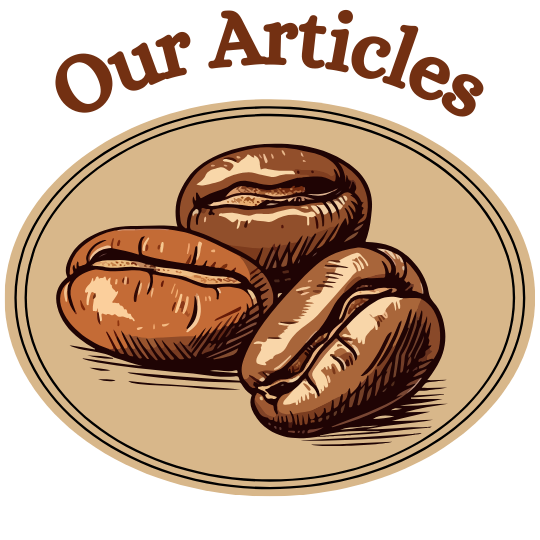Your cart is empty.
What Is Single Origin Coffee? A Beginner’s Guide

What Exactly Does “Single Origin” Mean?
At its simplest, Single Origin Coffee refers to coffee that is sourced from a single geographic location. However, the definition goes deeper depending on the level of traceability:
Single Country: The most general form. For example, coffee labeled as “Colombian” or “Ethiopian.”
Single Region: A more refined designation—e.g., Yirgacheffe, Sidamo, or Huila.
Single Farm or Estate: This is the most prized form. The coffee comes from a specific producer and often includes details like elevation, variety, and processing method.
Single Lot or Micro-lot: The most specific and rare. Harvested from a particular plot of land, sometimes even from a specific row of trees.
This precise traceability allows drinkers to connect deeply with the origin of their coffee—and that’s where the magic begins.
The History and Evolution of Single Origin Coffee
What Is Single Origin Coffee – Single origin coffee wasn’t always a thing in the commercial market. Historically, coffee was traded as a commodity, blended and anonymized for consistency rather than character. It wasn’t until the third wave coffee movement—which began in the early 2000s—that a focus on origin, transparency, and quality emerged.
Roasters and cafés began celebrating individual farms and regions, much like wineries do with vineyards. This shift turned coffee from a product of mass consumption into one of storytelling and craftsmanship.
What Makes Single Origin Coffee Special?
1. Flavor Transparency
Every Single Origin coffee carries the terroir of its birthplace. Factors such as:
Soil composition
Altitude
Rainfall and temperature
Sun exposure
Farming practices
Processing methods (washed, natural, honey, etc.)
…all come together to shape a flavor that is completely unique. While blends strive for harmony, Single Origin coffees highlight individuality.
2. Traceability and Ethical Sourcing
With Single Origin coffees, traceability goes hand-in-hand with ethical considerations. By knowing exactly who farmed your coffee, it’s easier to ensure:
Fair prices for farmers
Sustainable farming practices
Direct trade relationships that cut out exploitative middlemen
At cofflux.com, we carefully curate Single Origin coffees that prioritize these values.
Common Flavor Profiles by Origin
Let’s take a tour of the world and look at how geography translates into taste.
🌍 Africa
Ethiopia (Yirgacheffe, Sidamo): Floral, citrus, tea-like, bergamot, jasmine
Kenya: Winey acidity, berry notes, blackcurrant, tomato
Rwanda: Creamy, sweet spice, brown sugar
🌎 South America
Colombia: Balanced, medium-bodied, notes of caramel, apple, chocolate
Brazil: Low acidity, nutty, earthy, creamy body
Peru: Mild, soft fruit, floral aroma
🌏 Central America
Guatemala (Antigua, Huehuetenango): Full-bodied, cocoa, spice, complex acidity
Costa Rica: Bright, citrusy, honeyed
Honduras: Nutty, chocolatey, round body
🌏 Asia & Pacific
Sumatra: Earthy, herbal, spicy, syrupy body
Papua New Guinea: Bright, tropical fruit, mild floral tones
India (Monsooned Malabar): Woody, musty, low acidity
Single Origin vs. Blends: Which Should You Choose?
| Feature | Single Origin Coffee | Coffee Blends |
|---|---|---|
| Flavor Profile | Unique, reflective of origin | Balanced, consistent year-round |
| Traceability | High: farm/region often disclosed | Low: multiple sources |
| Seasonality | Often seasonal, small lots | Available year-round |
| Price | Generally higher | Typically lower |
| Ideal For | Exploration, connoisseurs, manual brewing methods | Everyday use, espresso blends, milk-based drinks |
Brewing Single Origin Coffee: Unlocking Its Potential
Because Single Origin beans are delicate and layered, the brewing method matters more than ever.
Best Brewing Methods
Pour Over (V60, Kalita, Chemex): Reveals clarity and complexity. Ideal for fruity or floral origins.
Aeropress: Versatile and great for highlighting brightness.
French Press: Brings out the body and darker notes in chocolatey origins.
Espresso: Complex and intense. Great for naturally processed single origins.
Cold Brew: Smooth and sweet; perfect for highlighting chocolate or nutty flavors.
Pro Tips for Brewing:
Use freshly ground beans (grind just before brewing).
Invest in a good burr grinder for uniformity.
Use filtered water for optimal extraction.
Stick to a consistent ratio (e.g., 1:16 coffee to water).
Let your beans degas for 4–7 days after roasting for best results.
Where to Buy High-Quality Single Origin Coffee
Not all coffee labeled “single origin” is created equal. Look for:
Roast date clearly printed
Tasting notes described on the label
Information about the farmer, farm, or cooperative
Altitude, variety, and process details
At cofflux.com, we offer a diverse range of carefully selected Single Origins that meet all these criteria and more. Our goal is to connect you directly with the farms and flavors that make coffee extraordinary.
The Pros and Cons of Single Origin Coffee
✅ Pros:
Exceptional, diverse flavor profiles
Deep connection to origin and farmer
Greater transparency and sustainability
Encourages small-batch and artisanal practices
❌ Cons:
More expensive
Limited supply and seasonality
Not always ideal for milk-based drinks (can be too acidic or delicate)
Is Single Origin Coffee Worth It?
If you’re passionate about coffee, or even just curious to go beyond the ordinary, the answer is a resounding yes. Single Origin coffee is about more than just taste—it’s about story, ethics, and a celebration of terroir.
Whether you’re brewing your first cup at home or diving deep into the nuances of African vs. Latin American profiles, there’s a universe of experience waiting for you.
So, the next time you take a sip of coffee, remember: with Single Origin, you’re tasting a place, a process, and a passion.






